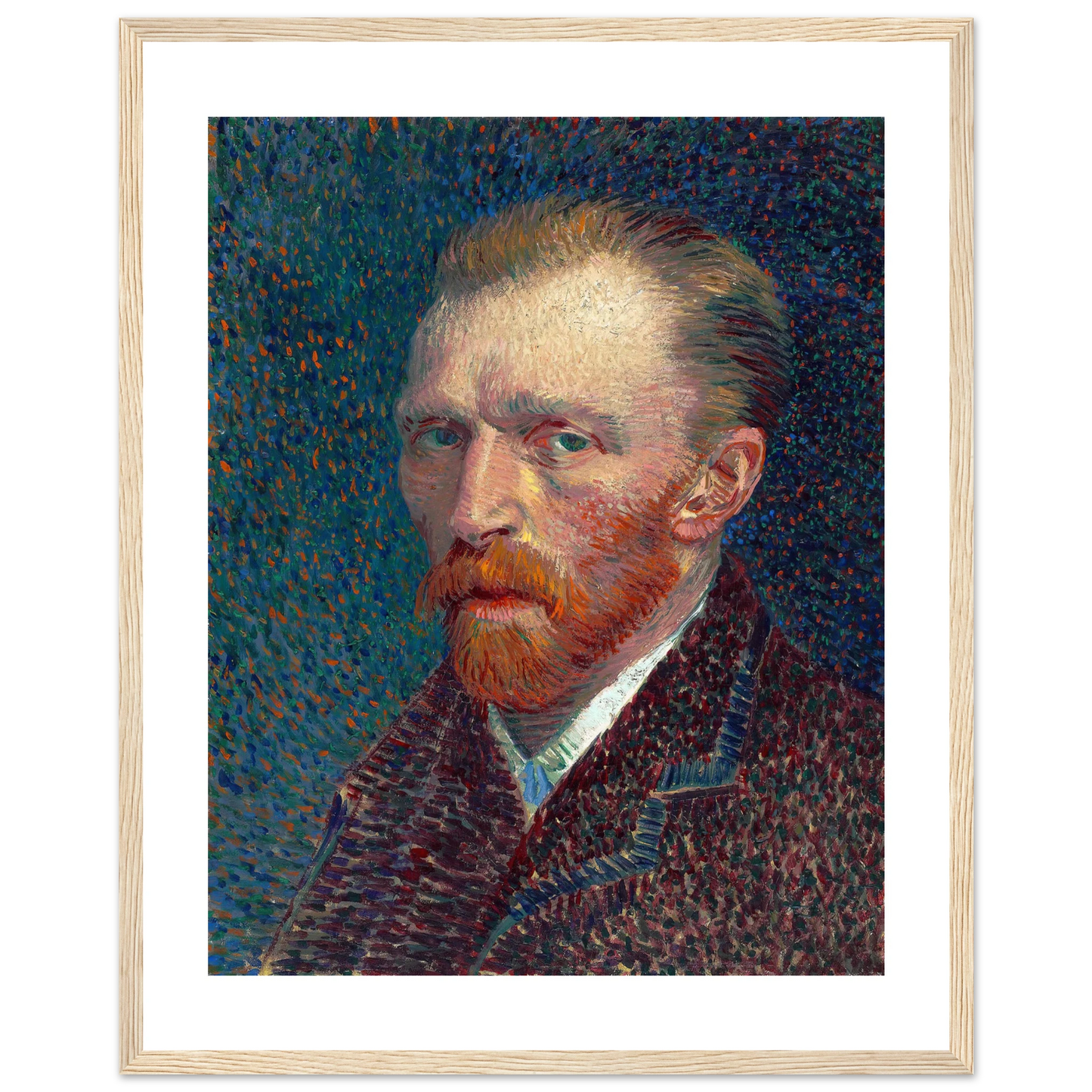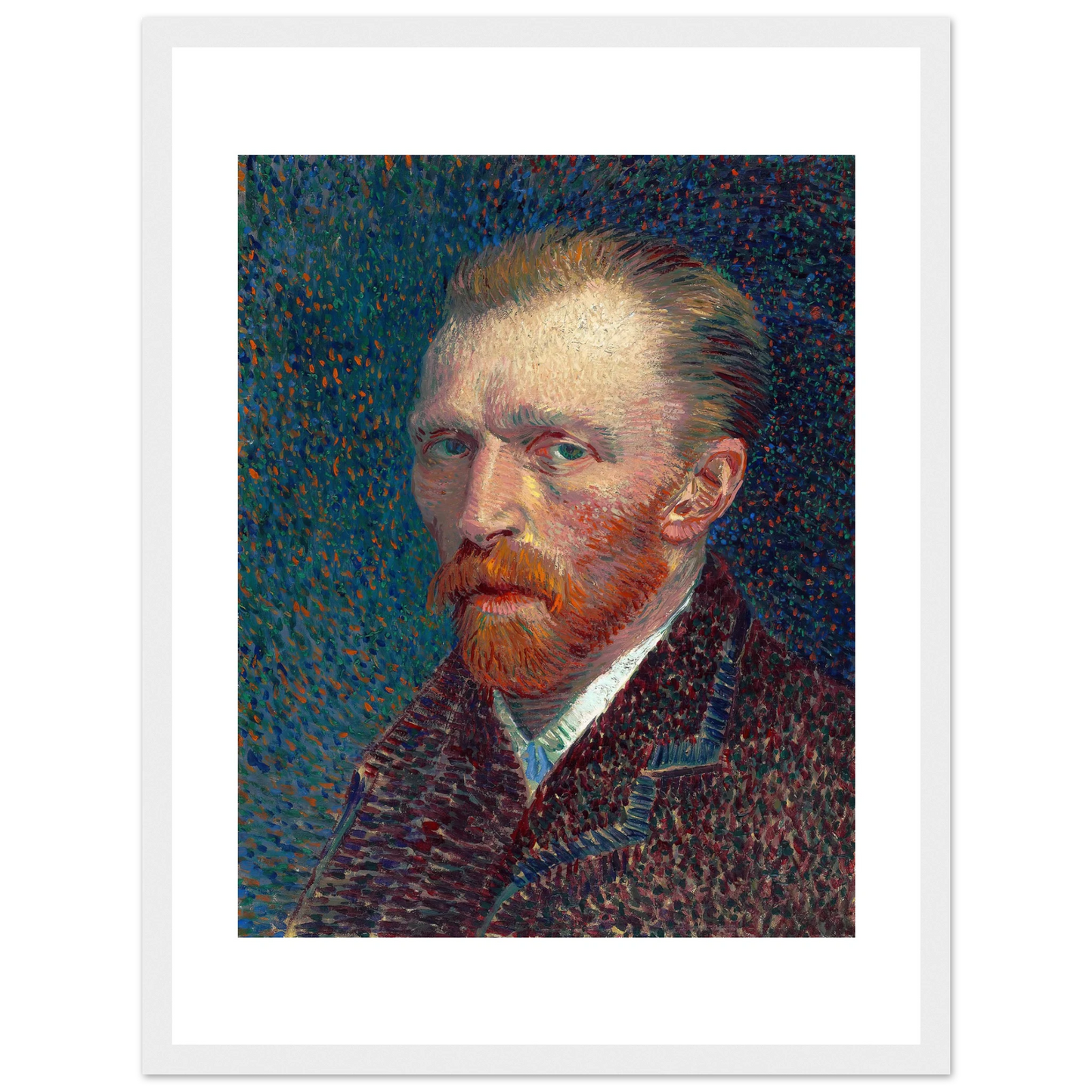Self-Portrait (1887)
Self-Portrait (1887)
Couldn't load pickup availability
Share
Most people see "Self-Portrait (1887)" and think: “Ah, Van Gogh—the tortured genius with the swirling brushstrokes.” But those who really look, those who truly "see", recognize something far more compelling. This isn’t just a self-portrait. It’s a rare, transitional moment in Van Gogh’s artistic evolution—one foot in his past, the other stepping toward the electrifying future that would define him.
The color alone tells the story. Gone are the dark, earthy tones of his early Dutch works; here, we get a bold, flickering palette of blues, oranges, and greens—a foreshadowing of the explosive, sun-drenched vibrancy that would later define "Starry Night" and "Sunflowers". The quick, directional strokes of paint pulse with nervous energy, mirroring the restless mind behind them. And then there are the eyes—steady, sharp, not yet burdened by the full weight of his struggles, but already searching, already questioning.
Standing before this piece, you don’t just see Van Gogh—you feel him. The way the colors vibrate against each other, the way the brushwork crackles with intensity, it’s as if he’s still here, still trying to figure himself out right alongside you.
If you know, you know. And now, that quiet understanding can be part of your space.


















Fast, Trackable Delivery. Wherever You Are 🌍
Made & shipped from 9 global print hubs
Our smart routing system picks the closest production centre to you for speed and sustainability in UK, US, Canada, France, Germany, Netherlands, Norway, Spain, Sweden.
Quick-turn dispatch
Prints leave the studio in 1-3 business days, then typically arrive in:
UK: 3-4 days | US: 4-6 days
Canada: 5-6 days | EU: 3-5 days
Rest of world: ≈ 14 business days
Trusted carriers only
Royal Mail, DHL, UPS, FedEx, Parcelforce, PostNL, Asendia, EVRi, Posten & more—all fully trackable.



